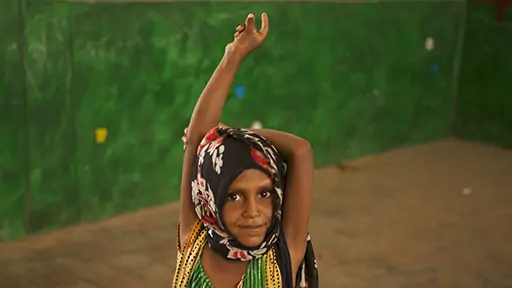Indigenous Calendar December, 2018: Scene from Afar

For most westerners, indigenous people are only ever seen from afar. (Sometimes, this is by design, as we saw last month with John Allen Chau and the Sentinelese people.) We might watch a documentary about this tribe or that, or we might turn to non-mainstream news sources that cover indigenous people's issues in greater depth than the mainstream media does. But for the most part indigenous people are out of sight and out of mind. Yet many westerners travel — often in large numbers — to places where indigenous people live. We may visit them as part of a tribal tourism program but, typically, only the physical distance lets us see them closer. Culturally, we still see them only from a distance.
This month's photo is a scene from Afar. Afar is a region in northeast Ethiopia where the indigenous Afar people live. It is also a region through which many western tourists pass due to the popularity of the Danakil Depression — a geological feature of outstanding interest in its own right. In fact, it is because of the interesting geology that the Afar people who live there are often overlooked, save for their salt mining occupation and photogenic camel caravans, as a people worth visiting in their own right.
Hamed Ale is a particularly small Afar community of only a few hundred people. But each year thousands of tourists spend a night there as a staging post to visit the Danakil Depression. On their way there and back they see the village school from afar since it is set about twenty meters back from the road. Ethiopia is a country particularly plagued by a high rate of school dropout; that rate is much higher for indigenous people and especially for girls. I took books and pens into the school and was present as some of them were distributed to elementary-level children. I requested to give those children a short lesson, during which I stressed the importance of remaining in school. In the end I asked which of them would stay in school and this small girl was the first to raise her hand.
While poverty is usually the main factor to cause dropping out of school, it is often also true that indigenous people do not understand the value of education. This second factor is harder to overcome. If we would tread closer as tourists to indigenous people we might begin to address it.
If you enjoyed reading this article, please consider supporting independent, advertising-free journalism by buying us a coffee to help us cover the cost of hosting our web site. Please click on the link or scan the QR code. Thanks!


